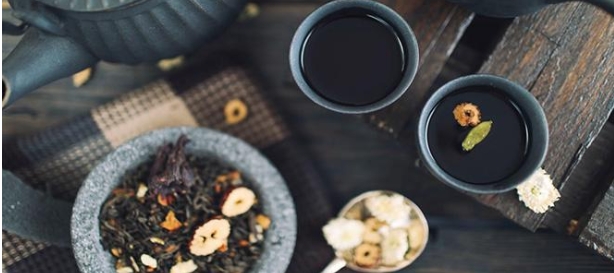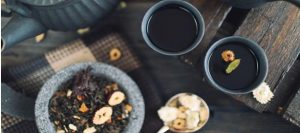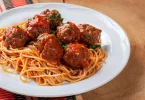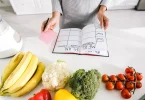Over time, tea has beautifully carved its own secure spot on our shelves and in our hearts! Some tea connoisseurs prefer brews made out of loose tea leaves; to some, tea bags are a saviour; then there are the ones who indulge in both as and when time permits. Tea bags vs. loose leaf tea has been the subject of many debates since tea bags came into being. Let’s learn a little about the difference between loose leaf and tea bags!
How To Differentiate Between Loose Leaf Tea and Tea Bags?
When it comes to Tea bags vs. loose leaf tea, both have their own charm. The choice you make depends on the kind of experience you desire – is it an elaborate indulgence you are looking for or is it convenience that you prioritise?
If you want to savour a tea blend’s true flavours and aromas, then loose tea leaves are what you must turn to! Although far more convenient, tea bags often fall short on giving you the exclusive tea experience that loose tea leaves can. That’s not to say that tea bags don’t make for a good cup of tea, they absolutely do and they have the same health benefits as well.
A brew made of loose tea leaves caters to all your senses. Since the leaves aren’t crammed into a bag, they preserve their original flavour and scent. These infusions give you an enchanting visual experience as the leaves unfurl beautifully into the cup. Indulging in a brew made of loose leaf teas requires a lot more effort compared to tea bags. With tea bags, you don’t need multiple tea accessories at your service. All you need is a cup, your little tea bag, and you are good to go!
The Tea Bag Origin
Time and again, we have all revelled in the convenience of tea bags, but have you ever wondered how it all began? What are they made of? How did they come to become an important part of our daily routine? Well, let’s discover some fun and indulging tea bag facts today! Tea bags were originally used only for Camellia sinensis teas; they are now made with other tisanes as well. Commonly, they are made of filter paper or food-grade plastic, or occasionally of silk cotton or silk.
Thomas Sullivan is the man responsible for making tea experiences more convenient by ‘accidentally’ introducing tea bags to the world! The American tea and coffee merchant sent out samples of his product in silk pouches in 1908. His intention was to encourage sales by sending out these samples. He did not expect the consumers to put them directly in the hot water to create tea brews. People did it anyway and it left them wanting more. Owing to rising demand, tea bags were successfully marketed in the same year by Thomas Sullivan!
Interesting Tea Bag Facts
Tea bags were an unplanned invention! Thomas Sullivan’s original intention of creating tea bags was to ship tea out in tiny envelopes as samples.
– Dried tea bags are the ideal fire-starters for a bonfire night or camping.
– Tea bags can be used to get rid of the grease left on the pans after cooking.
– Placing warm tea bags on each eye can help reduce puffiness and dark circles.
– Leaves in the tea bag absorb unpleasant odours without adding unnatural scents, making for natural air fresheners!
The Loose Leaf Tea Origin
Emperor Shen Nung, described as the father of agriculture in Chinese mythology, is believed to have discovered green tea almost 5,000 years ago. According to legend, as he rested with his entourage outdoors, a few leaves from a wild tree wafted into his pot of boiling water. Not noticing the change in colour, he sipped the intriguing brew and was enchanted by its delicate flavour and refreshing effect.
After sipping the brew, the Emperor described a warm feeling as if it was investigating every part of his body. Shen Nung named it “ch’a”, the Chinese character meaning to check or investigate. This written character symbolized the way tea brought humankind into balance with nature for the Chinese culture. Ancient China thus became the birthplace of tea and the Emperor, its inventor! Green tea became an imperial favourite, gradually and rightfully gaining fame all around the world, right after the discovery.
Ideal Accessories For Loose Leaf Tea Experiences
Tea Strainer:
A tea strainer is a tool placed over or in a teacup to catch loose tea leaves. You can add the perfect touch to your high tea with an elegant, silver-plated strainer. The drill is as simple as it gets – place the strainer over your tea cup, and pour your brewed tea into it from the teapot.
Tea Timer:
When it comes to soul-soothing tea experiences, precision is key! Tea timers can help you monitor your brewing precisely so you get the perfect cup of tea, time after time. Some tea timers can also specify the exact timings for different teas, so you can even use it to brew different teas at the same time.
Tea Infuser:
This one is a tool in which loose leaf tea leaves are placed for steeping or brewing, in a mug or a teapot full of hot water. It holds the leaves together to keep them from floating through your beverage while also extracting the best flavour from them. Unlike tea bags, a tea infuser is reusable as it is usually made with mesh wires.
Teapot:
Teapots were invented in China during the Yuan Dynasty, and have been an integral part of the tea culture till date. They are present in the history of our ancestors and in children’s story books. They were probably derived from ceramic kettles and wine pots, which were made of bronze and other metals and were a feature of Chinese life for thousands of years.
Tea Sets:
Speaking of tea sets, one can never have too many. Unique tea sets take the tea experience a notch up, not just for you but also for your guests. The earliest recorded use of tea sets dates back to the Han Dynasty in China (206-220 B.C.), when tea was served in multi-functional bowls, used for a variety of cooking needs.
Matcha Whisk:
People, who love a cup of authentic Japanese Matcha, insist on making it in the centuries-old Japanese tradition, with a natural bamboo whisk. You can use a Matcha whisk holder to deftly blend your stone-ground Matcha powder and hot water into a smooth infusion, and enjoy it absolutely fresh.
Matcha Ladle:
This elegant bamboo ladle that the Japanese call a Chashaku, is an indispensable part of their tea ritual. It helps you scoop Matcha powder smoothly into your bowl, and brings the touch of authentic Japanese tradition to your serene cup of Matcha.
Tea Culture Of The World is home to over 80 exquisite herbal & flavoured teas, hand-picked from the finest tea estates across the world. Our signature tea blends are carefully curated to delight tea connoisseurs. Each brings lingering tea experiences, laced with wellness.









